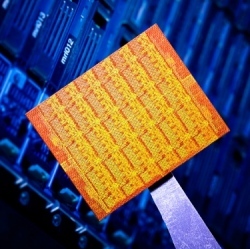
NAND flash memory has become increasingly popular in recent years, giving new zip to computers through solid-state drives and providing storage in almost all modern mobile devices. However, a recent research paper cautions that the technology as it currently stands will hit an evolutionary dead end in just over a decade. The problem is density: manufacturers offer increased storage both by utilizing smaller transistors within a given flash die, as well as increasing the number of bits stored within a given memory cell (MLC memory stores two, while TLC stores three). Both options allow the chips to store more data, but at the cost of increased errors and latency. Microsoft Research’s John Davis, along with Laura Grupp and Steven Swanson from the University of California, San Diego, took a look at 45 different flash chips from 6 different manufacturers, and tracked the effect of the two techniques compounding one another. Using the data, the group was able to estimate that by 2024 6.5nm TLC NAND flash will be able store a whopping 16TB, but that using transistors any smaller than that would render the memory unstable. "It’s not going to be viable to go past 6.5nm," Grupp said at this week’s Usenix Conference. "2024 is the end."
